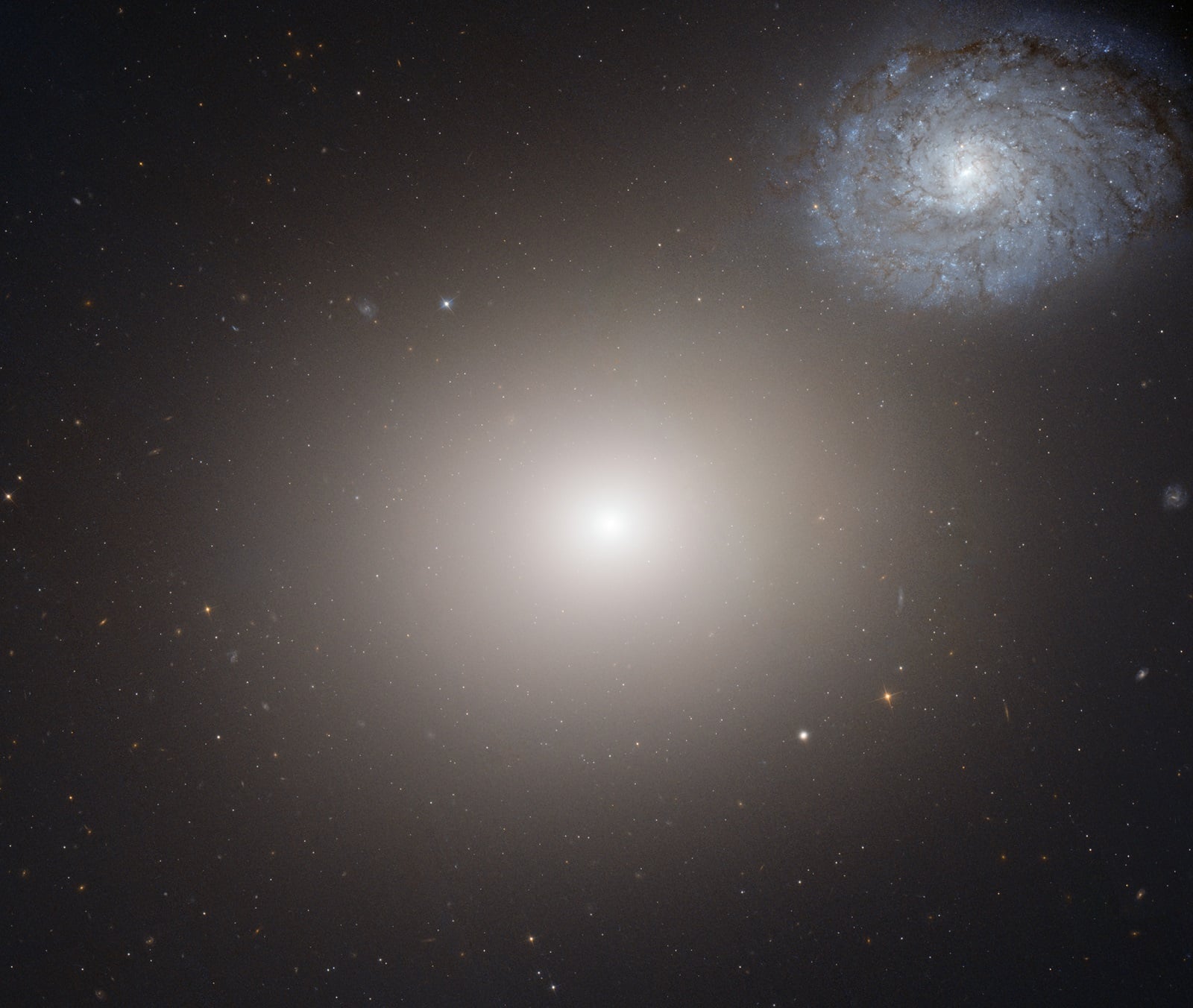Welcome back to Messier Monday! Today, we continue in our tribute to our dear friend, Tammy Plotner, by looking at the elliptical galaxy known as Messier 60.
In the 18th century, while searching the night sky for comets, French astronomer Charles Messier kept noting the presence of fixed, diffuse objects he initially mistook for comets. In time, he would come to compile a list of approximately 100 of these objects, hoping to prevent other astronomers from making the same mistake. This list – known as the
Messier Catalog
– would go on to become one of the most influential catalogs of Deep Sky Objects.
One of the notable objects in this catalog is Messier 60, an elliptical galaxy located approximately 55 million light-years away in the
Virgo constellation
. Measuring some 60,000 light years across, this galaxy is only about half as large as the Milky Way. However, it still manages to pack in an estimated 400 billion stars which, depending on which estimates you go by, is between four times and the same amount as our own.
What You Are Looking At:
Located about 60 million light years away and spanning about 120 million light years of space, M60 is the third brightest elliptical in the Virgo group and and is the dominant member of a subcluster of four galaxies, which is the closest-known isolated compact group of galaxies. In larger telescopes, you'll see another nearby galaxy - NGC 4647 - which might first be taken for a interactor, but may very well lay at a different distance since there is no tidal evidence so far found.
[caption id="attachment_137939" align="aligncenter" width="580"]
Messier 60. Credit: Adam Block/Mount Lemmon SkyCenter/University of Arizona
[/caption]
As L.M. Young (et al.) explained in their
2006 study
:
Although a search for young optical pulsars turned up negative after a recent supernova event, astronomer's did discover something rather exciting... a supermassive black hole! As Philip J. Humphrey (et al) indicated in their
2008 study
:
History of Observation:
Both M59 and neighboring M60 were discovered on April 11, 1779 by Johann Gottfried Koehler who wrote: "Two very small nebulae, hardly visible in a 3-foot telescope: The one above the other." It was independently found one day later by Barnabus Oriani, who missed M59, and four days later, on April 15, 1779, by Charles Messier, who also found nearby M58. In his notes Messier writes:
William Herschel would later perceive it as a double nebula and so would son John, calling it "A very fine and curious object." However, it was Admiral Smyth who must have finally had a clear viewing night a took a look at what was all around!
Locating Messier 58:
M59 is a telescopic only object and requires patience to find. Because the Virgo Galaxy field contains so many galaxies which can easily be mis-identified, it is sometimes easier to "hop" from one galaxy to the next! In this case, we need to start by locating bright Vindemiatrix (Epsilon Virginis) almost due east of Denebola.
Let's starhop four and a half degrees west and a shade north of Epsilon to locate one of the largest elliptical galaxies presently known - M60. At a little brighter than magnitude 9, this galaxy could be spotted with binoculars, but stick with your telescope. In the same low power field (depending on aperture size) you may also note faint NGC 4647 which only appears to be interacting with M60.
In a smaller telescope, do not expect to see much. What will appear at low power is a tiny egg-shaped patch of contrast change with a brighter center. As aperture increases, a sharper nucleus will begin to appear as you move into the 4-6" size range at dark sky locations, but elliptical galaxies do not show details. As with all galaxies, dark skies are a must!
Enjoy your own observations of the Virgo galaxy fields....
[caption id="attachment_137941" align="aligncenter" width="580"]
The location of Messier 60 in the Virgo constellation. Credit: IAU
[/caption]
And here are the quick facts on this Messier Object to help you get started:
- Object Name
-
Messier 60
- Alternative Designations
-
M60, NGC 4649
- Object Type
-
E2 Galaxy
- Constellation
-
Virgo
- Right Ascension
-
12 : 43.7 (h:m)
- Declination
-
+11 : 33 (deg:m)
- Distance
-
60000 (kly)
- Visual Brightness
-
8.8 (mag)
- Apparent Dimension
-
7x6 (arc min)
We have written many interesting articles about Messier Objects here at Universe Today. Here's Tammy Plotner's
Introduction to the Messier Objects
,
M1 – The Crab Nebula
, and David Dickison's articles on the
2013
and
2014
Messier Marathons.
Be to sure to check out our complete
Messier Catalog
. And for more information, check out the
SEDS Messier Database
.
Sources:
 Universe Today
Universe Today
